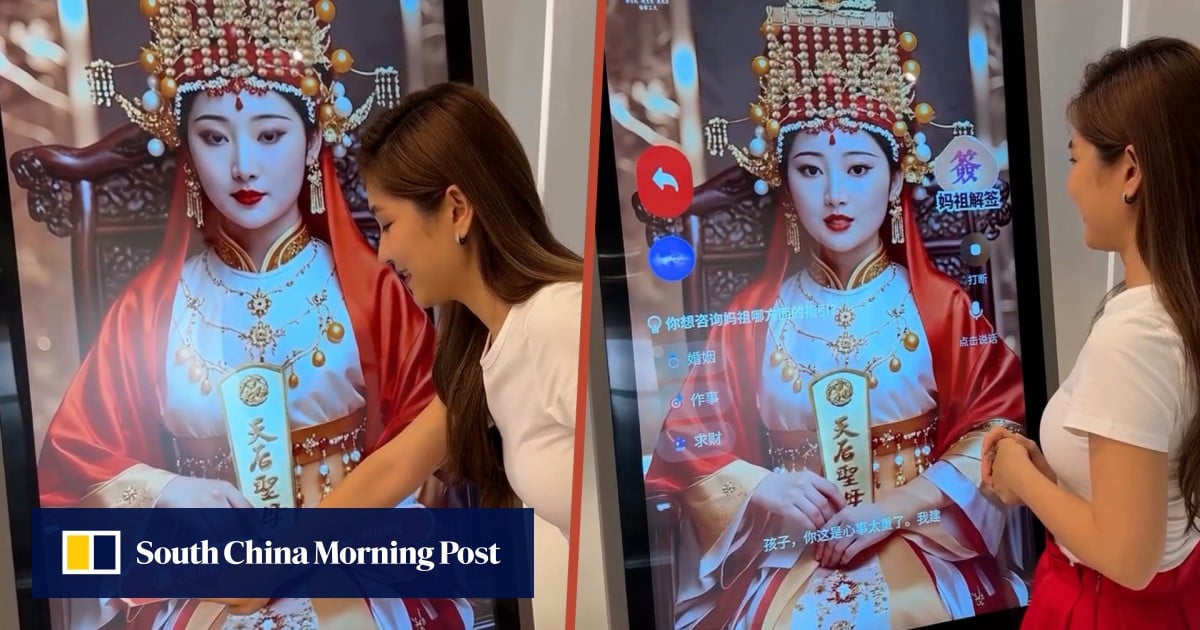First ‘AI Mazu’ Introduced at Malaysian Temple for Devotee Interaction and Concerns

Introduction to AI Mazu Statue
A unique blend of technology and spirituality has emerged at a Taoist temple in Malaysia. The Tianhou Temple, located in southern Johor, has introduced what it claims to be the world’s first "AI Mazu statue". This innovative creation allows worshippers to interact with a digital representation of Mazu, a revered sea goddess, offering them a modern way to engage with their faith.
Features of the AI Mazu
Interactive Experience
The AI Mazu statue is not just a static image; it features an interactive digital interface. Worshippers can approach the statue and engage in conversations, where they can ask questions, seek blessings, and even receive guidance based on traditional practices.
Appearance
The digital depiction of Mazu is crafted to be visually appealing. She is represented as a beautiful woman dressed in traditional Chinese attire. Many have noted that she resembles a more voluptuous version of the well-known Chinese actress Liu Yifei. This careful attention to detail aims to create a relatable and inspiring figure for believers.
How Worshippers Engage
Asking for Blessings
The primary purpose of the AI Mazu is to allow worshippers to seek blessings. Individuals can approach the statue and, through the interface, ask for divine favors or guidance in their lives.
Interpreting Fortune Sticks
In Taoist practice, fortune sticks are often used by followers to gain insights into their future. Worshippers can now ask the AI Mazu to help them interpret the fortune sticks they draw at the temple, providing a seamless integration of tradition with modern technology.
Addressing Doubts
The AI statue is designed to answer questions and resolve doubts believers may have about their spiritual journey or specific practices within the Taoist faith. This feature caters to those looking for immediate answers and fosters a deeper connection between the worshipper and the deity.
The Technology Behind the AI Mazu
Development by Aimazin
The Tianhou Temple collaborated with a Malaysian technology firm called Aimazin to bring this innovative concept to life. Aimazin is known for its work in artificial intelligence and has undertaken projects that include the cloning of human voices and personas.
State-of-the-Art AI
The AI technology powering the Mazu statue is cutting-edge, allowing for natural language processing and machine learning capabilities. This technology makes it possible for the statue to understand and respond to a wide range of inquiries, thus enhancing the overall worship experience.
Cultural Significance
Mazu in Tradition
Mazu, also known as Ma Zu Po, is a significant figure in Chinese mythology, often referred to as the goddess of the sea and protector of those who travel over water. Her worship is prevalent among fishermen and seafarers, and she is commonly respected in coastal communities throughout Asia.
Modernizing Spiritual Practices
By introducing an interactive AI version of Mazu, the Tianhou Temple showcases how technology can play a role in spiritual practices. This move not only appeals to younger generations who are more accustomed to digital interactions but also aims to revitalize traditional worship methods.
Reception and Impact
Community Response
The installation of the AI Mazu statue has generated excitement in the local community. Many worshippers view it as a unique opportunity to deepen their spiritual experience and connect with Mazu in a new, modern way.
Broader Implications
This creation poses interesting questions about the future of religious engagement and the role of technology in spiritual practices. It demonstrates how religious institutions can adapt to the changing times while maintaining core beliefs and traditions.
Through this innovative approach, the Tianhou Temple is paving the way for a new era of worship, one where technology and spirituality can coexist and potentially enhance the believer’s experience.






